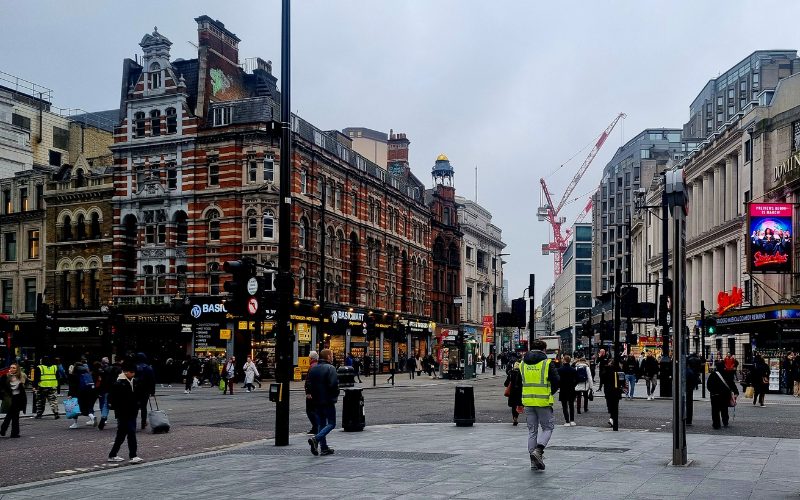Fly-tipping in London has risen on previously reported levels, with boroughs north of the Thames posting the highest numbers and rates, new data shows.
The number of fly-tipping incidents across the capital has risen from nearly 406,000 in 2021-22 to more than 422,000 in 2022-23, the data released in January by the Department for Environment, Food, and Rural Affairs (DEFRA) shows.
DEFRA reported street cleansing cost local authorities an estimated £822 million in 2022/23, up from £743 million in 2021/22.
According to a House of Commons report from December 2023, ‘Fly-tipping’ is the illegal disposal of household, industrial, commercial or other ‘controlled’ waste, which includes garden refuse and larger domestic items such as fridges and mattresses.
A Westminster food van owner, who has worked in the industry for 27 years, claimed a lack of general respect is the leading cause of fly-tipping, but also blamed local councils.
They said: “People just don’t have respect. Just look at the mess and the smell!
“What happens when people leave the pubs?
“A lot of people don’t realise the amount of urination and vomit due to bottomless brunches and night time drinking. Events in the area are badly managed.
“We used to have two sweepers dealing with the mess. Now we only have one from Northbank.”
DEFRA’s data shows the North West boroughs of Westminster, 30,737 incidents, Camden, 31,457 incidents, and Brent, 34,830 incidents, reported the largest number of fly-tipping incidents in 2023.
Between 2021 and 2023, Westminster’s numbers increased dramatically, whilst the number of incidents in the boroughs of Lewisham and Hounslow are currently on a downward trend.
Islington recorded the least amount of fly-tipping and the borough has taken the bottom of the table four times in the past five years.
It is worth noting local authorities can report their waste differently, with DEFRA cautioning those reporting higher incident numbers are often those being more proactive in identifying incidents by encouraging the public to report incidents.
Councillor Paul Dimoldenberg, Westminster City Council’s cabinet member for City Management and Air Quality said: “Keeping Westminster’s streets clean and safe for residents and visitors is the council’s top priority.
“Westminster is the centre of economic and cultural activity at the heart of London, welcoming millions of visitors every year. As a result, the council processes huge quantities of waste and recycling every day.
“We saw reduction in rubbish dumped in known hotspot areas last year and continue to hand out warnings and fixed penalty notices where we have the evidence of who has committed the offence.
“The council also offers a quick and efficient service for residents to dispose of bulky waste instead of irresponsibly dumping it on the street.
“This has proven so popular we have shortened the turnaround time for collections to three days down from 10.”
The City of London posted the highest rate of fly-tipping per 1000 people, at 276.9. Following the City, Westminster, 145.42, Camden, 144.27, and Brent, 102.07, posted the highest rates in 2023.
Their rates are high above the averages for both London, 47.61, and England, 18.96, with Enfield, Bexley, Bromley, and Islington reporting lower figures.
As well as recording the least incidents of fly-tipping in London, Islington allegedly holds the lowest fly-tipping rate per-1000.
In a statement to NWL, the City of London Corporation asserted: “These figures are misleading and paint an inaccurate picture.
“The City Corporation has a much lower resident population compared to other local authority areas with many more people visiting and working in the Square Mile City than living here.”
According to the Corporation’s website, the City of London has about 8,000 residents, but receives over 500,000 commuters a day, in addition to 10,000,000 visitors a year.
Contacted regarding Brent’s high rate of fly-tipping per-1000 and number of reported incidents Councillor Krupa Sheth, Cabinet Member for Environment, Infrastructure, and Climate Action, said: “Our borough has seen decreases in the amount of fly-tipping over the years.
“We are taking serious steps to decrease the amount of rubbish littered on our streets in many ways, mainly through our award-winning WANTED campaign plasters pictures of fly-tippers across the borough asking for information on who they are, and when we find them we can give them a hefty fine.
“We have one of the largest populations in London, with high population density, both of which are factors to fly-tipping.
“Flagrant fly-tippers are in the small minority, and this should be a warning to them that they could get up to a £1,000 fine for dumping their waste where they please.”
Whilst 2022-23 saw a marked decrease in Highway Incidents on 2021-22 levels, the period reported an increase in other land types saw a surge in fly-tipping.
Footpaths and Bridleways Incidents increased from 71,688 to 92,606, and Council Land Incidents rose from 26,826 to 33,588.
Incidents on unidentified land also witnessed a large increase; rising nearly 13,000 on 2021-22 levels.
In the UK, local authorities are largely responsible for investigating and acting on fly-tipping, with more serious incidents handled by the Environment Agency in England.
Landowners must deal with fly-tipping on private land.
A DEFRA spokesperson said: “Fly-tipped rubbish is a blight on the landscape and a burden on councils to clean up – so it’s absolutely right for councils to take strong action whenever a crime is committed.“
“We are making solid progress – with enforcement up by 6% and fly-tipping decreasing for the second year in a row – but we know there is more to do.
“That’s why we are helping councils to take the fight to criminals, with additional grants to tackle fly-tipping, higher £1,000 on-the-spot fines for offenders and powers to stop, search, and seize vehicles suspected of being used for fly-tipping.”
For advice on fly-tipping, head to Keep Britain Tidy, a national environmental charity.
If you want to report fly-tipping, you can do so via the government website linked here.
The following data was used in this article: Fly-tipping statistics for England.





Join the discussion